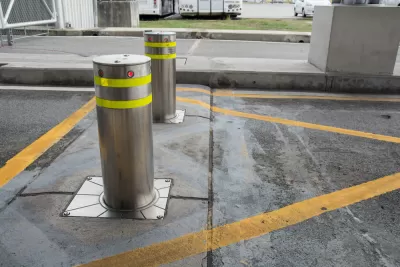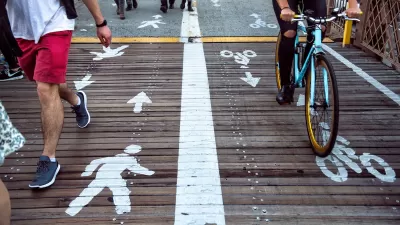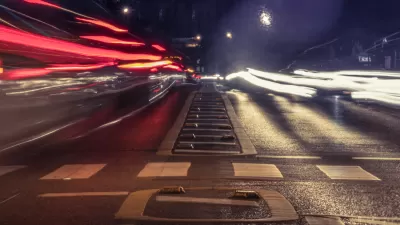Roadway designs protect drivers and construction workers with robust barriers. Why don't we protect pedestrians in the same way?

Assessing the different types of barriers installed on American roadways, Charles Marohn argues that we need beefed-up protection for pedestrians, much like we provide for drivers or construction workers. At roadway construction sites, Marohn writes, "[t]he concrete barriers do not have a breakaway design. There are no shear pins to absorb the kinetic energy of an errant vehicle. A driver who loses control in a construction zone is going to feel the brutal consequences of that mistake. The construction worker will not."
Marohn asks, "[w]hy are we concerned with the construction worker and not the kid walking the sidewalk? Why are we concerned with the oncoming traffic and not the person waiting at the traffic signal?" Historically, roadway designs have ensured protection for drivers while ignoring people on the sidewalk who might get struck by out-of-control cars.
"America needs a billion bollards. There is no coherent argument against lining every street in America with them. This is the minimum level of protection needed to keep people safe from violence. It is the least we can do to correct the massive asymmetry of risk experienced on our nation’s streets by people outside of a vehicle."
To improve transportation, Marohn asserts, "skip the megaprojects." Not doing more to protect pedestrians amounts to "institutionalized gross negligence."
FULL STORY: One Billion Bollards

Planetizen Federal Action Tracker
A weekly monitor of how Trump’s orders and actions are impacting planners and planning in America.

San Francisco's School District Spent $105M To Build Affordable Housing for Teachers — And That's Just the Beginning
SFUSD joins a growing list of school districts using their land holdings to address housing affordability challenges faced by their own employees.

The Tiny, Adorable $7,000 Car Turning Japan Onto EVs
The single seat Mibot charges from a regular plug as quickly as an iPad, and is about half the price of an average EV.

Austin's First Single Stair Apartment Building is Officially Underway
Eliminating the requirement for two staircases in multi-story residential buildings lets developers use smaller lots and more flexible designs to create denser housing.

Atlanta Bus System Redesign Will Nearly Triple Access
MARTA's Next Gen Bus Network will retool over 100 bus routes, expand frequent service.

Toronto Condo Sales Drop 75%
In two of Canada’s most expensive cities, more condos were built than ever — and sales are plummeting.
Urban Design for Planners 1: Software Tools
This six-course series explores essential urban design concepts using open source software and equips planners with the tools they need to participate fully in the urban design process.
Planning for Universal Design
Learn the tools for implementing Universal Design in planning regulations.
Smith Gee Studio
City of Charlotte
City of Camden Redevelopment Agency
City of Astoria
Transportation Research & Education Center (TREC) at Portland State University
US High Speed Rail Association
City of Camden Redevelopment Agency
Municipality of Princeton (NJ)





























